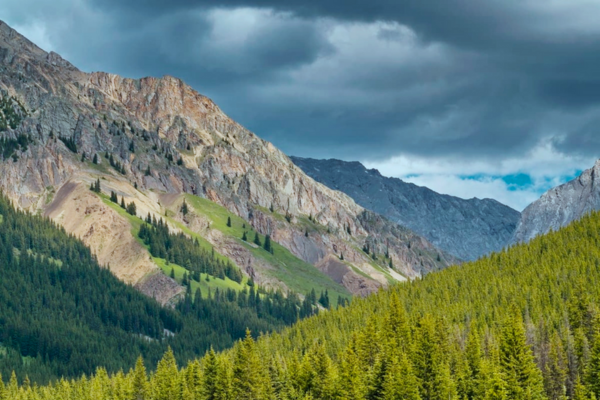July 17, 2018, Calgary – Today the Canadian Parks and Wilderness Society (CPAWS) released its annual Parks Report, What’s Next: Parks and Protected Areas to 2020 and Beyond, which recommends how governments in Canada–federal, provincial, territorial, and Indigenous–can work together to achieve our international commitment to protect at least 17% of our landscape by 2020. This would almost double our current protected areas and would be a step towards the longer-term work needed to reverse the catastrophic and ongoing decline in biodiversity. Canada has the biggest opportunity in a generation to protect nature – and this report provides a roadmap for action.
The commitment to work together to achieve the 2020 protected area target, along with the $1.3 billion investment in conservation in the 2018 federal budget, creates an unprecedented opportunity for Canada to safeguard nature in the spirit of reconciliation between Indigenous governments and Crown governments, and between all peoples in Canada and nature.
Alberta has demonstrated leadership by stepping forward to co-lead the Pathway to Canada Target 1 initiative with the Government of Canada. The provincial government also recently designated five new boreal Wildland Provincial Parks. “These new parks permanently protect 13,600 km2 of boreal forest around Wood Buffalo National Park, creating the largest contiguous boreal forest protected area in the world. Protecting this habitat protects water resources, traditional uses of these areas and wildlife, including threatened species such as caribou,” says Dr. Kecia Kerr, Executive Director of CPAWS Northern Alberta Chapter. “The government has also committed to working with Indigenous peoples to develop co-management processes and Indigenous Guardians programs for these areas.”
Alberta now sits at 14.6 percent of our lands protected. However, protection of previously announced, or proposed, areas are steps that can be taken by the province immediately to achieve and surpass the goal of 17% protection.
“Designating the Bighorn Backcountry as a Wildland Provincial Park is an important next step in protecting our headwaters for downstream communities, including Edmonton, and ensuring our protected areas network is connected so wildlife can move through the Rocky Mountains and foothills,” explains Tara Russell, Program Director at CPAWS Northern Alberta. “The foothills of Alberta are sorely under-protected, and establishing the Bighorn as a protected area will help ensure that this region continues to support a diversity of species here in Alberta.”
“If Alberta wants to reach 17% protection by 2020 the province will also have to deliver on its previous 2016 commitment to protect of boreal caribou habitat in Alberta’s northwest,” says Kerr. “Permanent protection of caribou habitat in the northwest region of Alberta should include management of the protected areas by local indigenous communities.”
Areas in southern Alberta, like the Pekisko Heritage Rangeland, that have been proposed under the South Saskatchewan Regional Plan land-use planning process but never officially designated for protection are also logical next steps for Alberta.
“The collaborative effort between Alberta’s ranching community, First Nations, regional municipalities, provincial government and conservation organizations on the ongoing conservation of the Pekisko Heritage Rangeland is a model for cooperation,” says Katie Morrison, Conservation Director of the Southern Alberta Chapter of CPAWS. “The Pekisko is a key grasslands landscape of rolling foothills, is home to grizzly bears and bull trout, and is at the heart of Alberta’s First Nations and ranching heritage. Legal designation of this area as a Heritage Rangeland would ensure the protection of these values for generations to come”
Diverse voices across the country are now calling for action on protected areas, and momentum is growing. With 2020 right around the corner, people are asking, “can Canada do this?” “Can our country almost double the protection of our lands and freshwaters in 2 years?” The answer is YES. In the report, CPAWS identifies places in each jurisdiction where a considerable amount of collaborative work has already been done on proposed protected areas.
CPAWS is ready to work with federal, provincial, territorial and Indigenous governments on protecting our most iconic landscapes and the wildlife that call them home.
-30-
For interviews, contact:
Tara Russell, Program Director, CPAWS Northern Alberta Chapter
Katie Morrison, Conservation Director, CPAWS Southern Alberta Chapter
More News

All-Seasons Resort Policy Released

Critical Habitat and Industry Lobbying Part 4: How DFO Allows Critical Habitat Destruction

